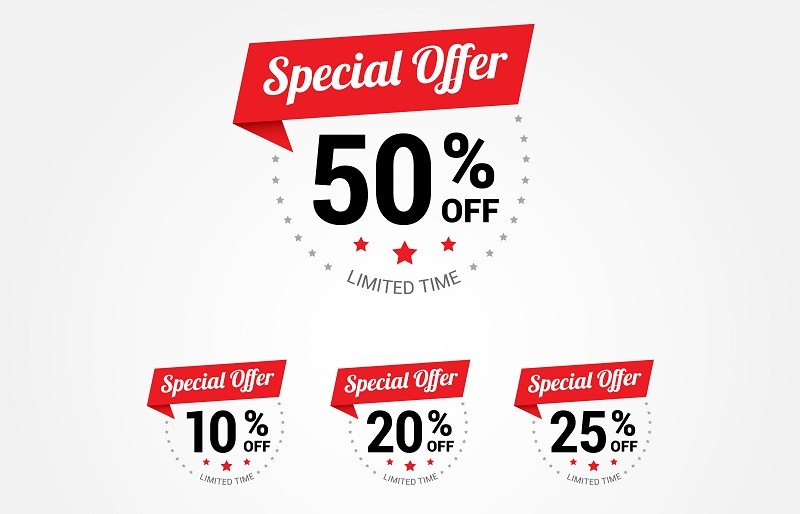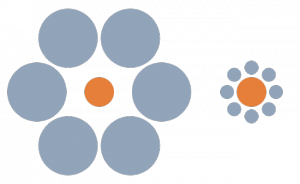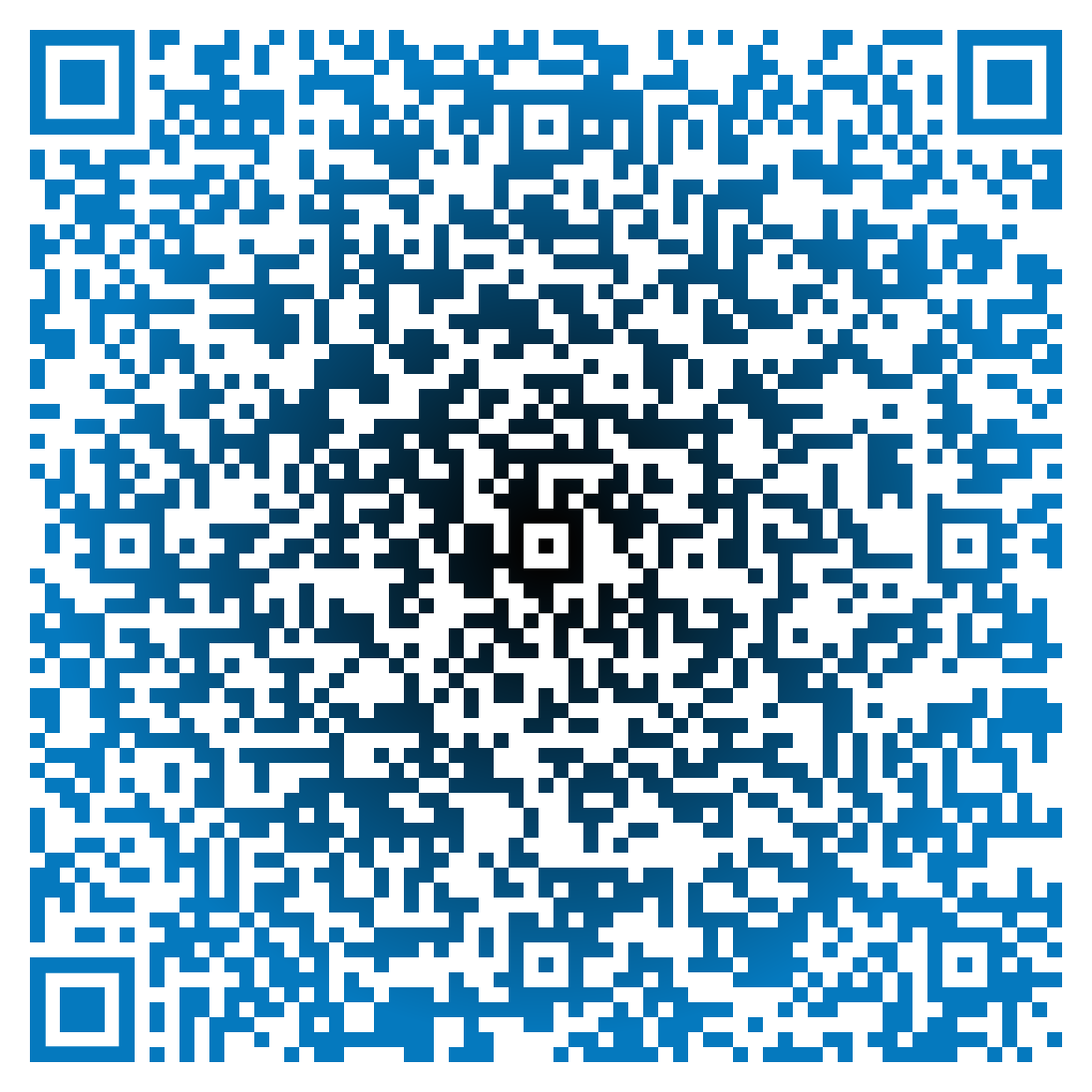A simple tactic to get prospects to make a decision. (… it works on bosses, spouses, and small children too!)

One of the great annoyances of the sales process is to find your prospect in a state of indecision, otherwise known as analysis paralysis. Typically this happens when the brain is faced with too many choices, and none of them present themselves as being self-evident and clearly superior. One technique a marketer can use to alleviate this paralysis is to use contrast. The brain loves clear contrast because it allows it to “lock down” on a clear choice.
 The image at right is called an Ebbinghaus illusion. As a result of the positioning and size of the outer circles, the center circle surrounded by large circles appears smaller than the center circle surrounded by small circles. But they are exactly the same size. The brain is using the mental shortcut of contrast to arrive at a quick (but in this case erroneous) conclusion.
The image at right is called an Ebbinghaus illusion. As a result of the positioning and size of the outer circles, the center circle surrounded by large circles appears smaller than the center circle surrounded by small circles. But they are exactly the same size. The brain is using the mental shortcut of contrast to arrive at a quick (but in this case erroneous) conclusion.
Marketers can use this need for contrast to greatly amplify their persuasion techniques. Psychologist Dan Ariely in his book Predictably Irrational illustrates this with the following example.
He offered a group of 100 students at MIT’s Sloan School of Management the following choices for a magazine subscription:
- Economist.com web subscription – US $59
- Print subscription only – US $125
- Print & web subscription – US $125
As any first grader will tell you, there seems to be a marked difference in value for price between offers #2 and #3. Why would anyone choose just the print subscription for $125 when they could have BOTH the print and web subscription for the SAME PRICE?
The students came to this conclusion as well. Their choices were:
- Economist.com web subscription – US $59 (16 students)
- Print subscription – US $125 (0 students)
- Print & web subscription – US $125 (84 students)
For a predicted revenue of $11,444.
Pretty good! Our education system is working. The students quickly identified that offer #3 was vastly superior to #2.
Ariely then gathered another group of 100 students, and ran a similar test. This time though, he pulled the print subscription only offer and gave the students just TWO CHOICES. Here are the results:
- Economist.com web subscription – US $59 (68 students)
- Print & web subscription – US $125 (32 students)
For a predicted revenue of $8,012.
52 MORE students chose the print and web offer in the first experiment!! On a revenue basis, it out performed the second experiment by 43% simply by employing a high contrast choice that made it easier for the brain to make a “no-brainer” decision!!
Ariely calls this choice a decoy price. It was never meant to be chosen, but simply placed in the series of choices to MAKE THE CHOOSING EASIER for the prospect’s brain.
Employ the contrast principle, and watch your sales grow!
![]()
